Digital Posters
Multinuclear & Preclinical RF Coils
ISMRM & SMRT Annual Meeting • 15-20 May 2021

| Concurrent 4 | 19:00 - 20:00 |
2497.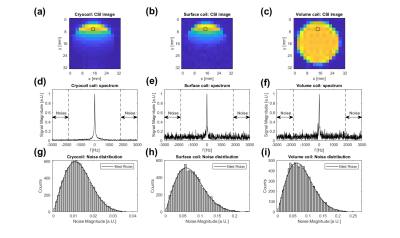 |
Signal-to-noise-ratio gain and in vivo application of a 13C cryo-coil for hyperpolarized MRSI
Luca Nagel1, Geoffrey J. Topping1, and Franz Schilling1
1Department of Nuclear Medicine, Technical University of Munich, School of Medicine, Klinikum rechts der Isar, Munich, Germany
Cryogenically cooled transmit/receive radiofrequency coils (cryocoils) improve the signal-to-noise ratio (SNR) compared to conventional RF coils by minimizing thermal coil noise. The SNR of a cryoprobe, a surface coil at room temperature and a volume coil was assessed using chemical shift imaging of a 13C-urea phantom. Using the cryocoil an SNR improvement up to a factor of 10 compared to conventional coils was observed. In addition, a proof-of-concept in vivo experiment using the 13C-cryocoil for detection of the metabolic turnover of hyperpolarized 13C-pyruvate was successfully performed.
|
|||
2498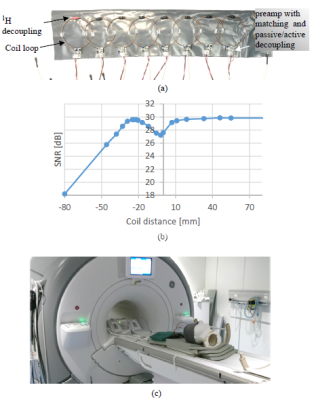 |
Ultra-Flexible 8-Channel Receive Array for 13C Imaging Video Permission Withheld
Vitaliy Zhurbenko1, Juan Diego Sánchez Heredia1, Wenjun Wang1, and Jan Henrik Ardenkjær-Larsen1
1Technical University of Denmark, Kgs. Lyngby, Denmark
Imaging of low-abundance nuclei could benefit from close proximity detecting coils. Close proximity is conveniently achieved using flexible arrays, which conform to the shape of the subject. In this work, a design of an 8-element ultra-flexible array for 13C imaging is presented. Each array element includes a low-noise preamplifier with 13C/1H active and passive decoupling, as well as high-power pulse protection circuits. The array is lightweight and easy to handle. The design approach is directly scalable to larger size arrays.
|
|||
2499. |
Metamaterial Liner RF Head Coil for 23Na and 1H at 4.7 T
Adam Maunder1, Ashwin Iyer2, and Nicola De Zanche1
1Oncology, Medical Physics, Cross Cancer Institute, University of Alberta, Edmonton, AB, Canada, 2Electrical and Computer ENgineering, University of Alberta, Edmonton, AB, Canada
Well-established and emerging methods of 23Na sodium imaging in the brain benefit from high field strength, but require imaging sequences that are constrained by specific absorption rate (SAR) limits. Additionally, concurrent proton imaging is desirable for complementary anatomical/structural information. Here, we present a novel metamaterial liner-based MR coil for 23Na/1H imaging at 4.7 T, consisting of longitudinally-spaced rings that alter the effective electromagnetic properties between the liner and outer RF shield (waveguide boundary). In simulation, the metamaterial liner was found to produce lower local 10g averaged SAR for the same mean transmit field relative to a conventional birdcage coil.
|
|||
2500.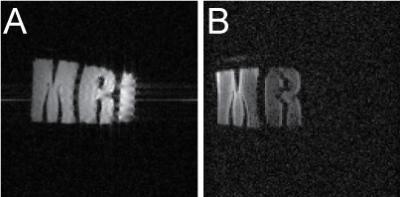 |
1H, 31P, 23Na, and 13C imaging and spectroscopy with a multi-tunable double-coil assembly
Viktor Puchnin1, Viacheslav Ivanov1, Mikhail Gulyaev2, and Mikhail Zubkov1
1Department of Physics and Engineering, ITMO University, Saint-Petersburg, Russian Federation, 2Faculty of Fundamental Medicine, Lomonosov Moscow State University, Moscow, Russian Federation
The RF-coils of small-animal scanners often limit the range of accessible nuclei to single- or double-nuclear scanning. Here, a multi-tuneable RF-coil design is investigated. The design comprises a butterfly-type RF-coil for 1H, and a multi-tuneable coil for X-nucleus imaging. The coil assembly is tested in a 7 T scanner. 1H and X-nucleus field maps show good matching between the simulation and experiment. Imaging and spectroscopy experiments provide well-resolved images as well as distinctive spectral peaks corresponding to the phantom compounds. The presented imaging method with single coil assembly is considered a promising expansion of heteronuclear imaging.
|
|||
2501.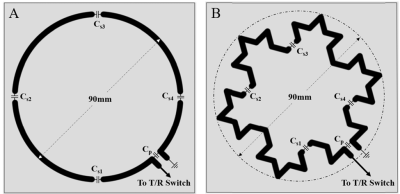 |
SNR and B1+ Field Homogeneity of a Koch Fractal Geometry RF Surface Coil for 23Na-MRI
Cameron Nowikow1, Paul Polak1, Norman B. Konyer2, Natalia Nikolova3, and Michael D. Noseworthy1,2,3
1School of Biomedical Engineering, McMaster University, Hamilton, ON, Canada, 2Imaging Research Centre, St. Joseph's Healthcare, Hamilton, ON, Canada, 3Electrical and Computer Engineering, McMaster University, Hamilton, ON, Canada There is an intrinsic lack of SNR in 23Na-MRI images compared to that of proton-based MRI. It is possible that RF coil geometry can affect the acquired images' SNR. This abstract is an investigation into the B1+ field characteristics of a Koch snowflake fractal RF surface coil to see if the produced field is more homogeneous than that of a standard circular surface coil which could lead to higher SNR in the resultant 23Na images. It was found that the circular geometry produced a more homogeneous field, along with higher SNR than the fractal coil. |
|||
2502.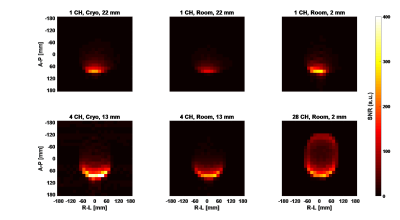 |
Towards a cryogenic RF coil array for 13C human head imaging: first experience
Wenjun Wang1, Juan Diego Sánchez Heredia2, Vitaliy Zhurbenko1, and Jan Henrik Ardenkjær Larsen2
1Department of Electrical Engineering, Technical University of Denmark, Kongens Lyngby, Denmark, 2Department of Health Technology, Technical University of Denmark, Kongens Lyngby, Denmark
A cryogenic coil and a dedicated cryostat for 13C human head imaging is developed. A 1.90-fold SNR enhancement over a room temperature coil is observed experimentally. To verify the retention of SNR enhancement in arrays, a 4-channel cryogenic coil array and another cryostat are also developed. The superior performance to a room-temperature array is confirmed experimentally.
|
|||
2503. |
Quantitative Comparison of 31P MRS Imaging Performances between 7T and 10.5T Human Scanners Using a Loop-dipole 31P-1H Probe
Xin Li1, Hannes M. Wiesner1, Matt Waks1, Xiao-Hong Zhu1, and Wei Chen1
1Center for magnetic Resonance Research (CMRR), Department of Radiology, University of Minnesota, Minneapolis, MN, United States
In vivo 31P MRS imaging (MRSI) is important for studying cerebral energy metabolism, intracellular NAD and redox ratio. However, it is challenging to achieve high spatiotemporal resolution owing to limited 31P sensitivity and low phosphorus metabolites concentration. We had demonstrated that ultrahigh field (UHF) could significantly improve the 31P-MRS sensitivity and spectral resolution. In this study, we designed and constructed a loop-dipole 31P-1H probe, which could operate at 7T and 10.5T for quantitative comparison of 31P MRSI signal-to-noise ratio (SNR) between the two fields. We found that the apparent SNR at 10.5T was significantly higher than that of 7T.
|
|||
2504. |
A nested dual-tuned proton-sodium loop-array transceiver coil on a 9.4T whole-body MRI system
Zhe Wang1, Fangrong Zong2, Cheng Fang1, Wenhui Yang3,4, Shasha Yue1, Yan Hou2, Zehui Li2, Tianyu Xie2, Kun Zhang2, Yan Zhuo1,4,5, Xiaohong Joe Zhou6, Xiaoliang Zhang7, and Rong Xue1,4,8
1State Key Laboratory of Brain and Cognitive Science, Beijing MRI Center for Brain Research, Institute of Biophysics, Chinese Academy of Sciences, Beijing, China, 2Institute of Biophysics, Chinese Academy of Sciences, Beijing, China, 3Institute of Electrical Engineering Chinese Academy of Sciences, Beijing, China, 4University of Chinese Academy of Sciences, Beijing, China, 5CAS Center for Excellence in Brain Science and Intelligence Technology, Chinese Academy of Sciences, Beijing, China, 6Center for MR Research and Departments of Radiology, Neurosurgery and Bioengineering, University of Illinois at Chicago, Chicago, IL, United States, 7Department of Biomedical Engineering, State University of New York at Buffalo, Buffalo, NY, United States, 8Beijing Institute of Brain Disorders, Beijing, China
In this study, a nested dual-tuned proton-sodium multi-channel loop-array transceiver coil was designed and constructed for 9.4T MRI, which could provide images for both proton and sodium at the same location. This coil adopts nested structure, which contains 8-channel transceiver loop elements respectively, and each loop is equipped with an independent transmit/receive circuit. The coil array was simulated for B1 field distribution and was further tested on a 9.4T whole-body MRI platform with home-built spectrometer. Proton and sodium images on a water phantom were successfully collected on this system with high quality.
|
|||
2505.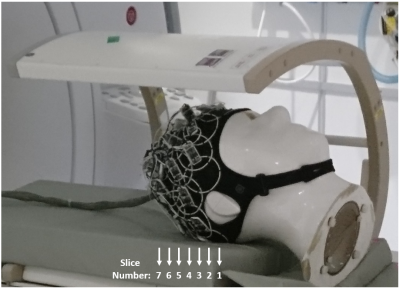 |
Flexible 32-Channel 13C MRI Head Array: An EEG-Lookalike Design Approach
Juan Diego Sánchez Heredia1, Wenjun Wang1,2, Vitaliy Zhurbenko2, and Jan Henrik Ardenkjær-Larsen1
1Department of Health Technology, Technical University of Denmark (DTU), Kgs. Lyngby, Denmark, 2Department of Electrical Engineering, Technical University of Denmark (DTU), Kgs. Lyngby, Denmark
We propose a design concept for flexible human head coil arrays applicable to a wide frequency range. Electrically, the design relies on high decoupling obtained through a controlled high mismatched connection to the low-impedance preamplifiers. Mechanically, the array is built into a neoprene EEG cap, and made of regular-copper flexible wire. The array layout is designed to have an axis to stretch along, therefore allowing tight fit to a variety of human-head sizes. A 32-channel prototype for 13C at 3T (32.1 MHz) is presented and evaluated, showing SNR performance superior to a 13C-dedicated volume coil.
|
|||
2506.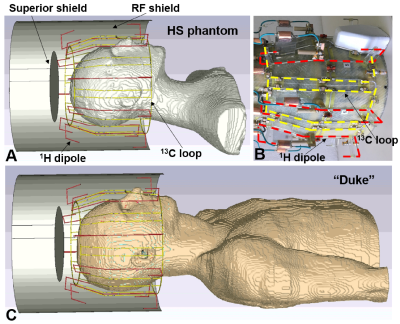 |
9.4 T Double-Tuned 13C/1H Human Head Array Using a Combination of Surface Loops and Dipole Antennas.
Nikolai Avdievich1, Georgiy Solomakha2, Loreen Ruhm1, Anke Henning1,3, and Klaus Scheffler1
1High-field Magnetic Resonance, Max Planck Institute for Bilogical Cybernetics, Tübingen, Germany, 2Physics and Engineering, ITMO University, St. Petersburg, Russian Federation, 3Advanced Imaging Research Center, University of Texas Southwestern Medical Center, Dallas, TX, United States
Dipole antennas have been successfully utilized at ultra-high fields (UHF, >7 T) for human body and head imaging. Combining X-nuclei surface loops and 1H dipoles can substantially simplify the design of a double-tuned UHF human head coil. In this work, we developed and constructed a novel 13C/1H human head 9.4 T array coil consisting of eight 13C surface loops and eight 1H folded-end dipoles surrounding the head. We showed that coupling between loops and dipoles can be minimized by placing four 1H traps into each 13C loop. The new coil demonstrated an improved 1H longitudinal coverage and reasonable Tx efficiency.
|
|||
2507. |
Analysis of common-mode rejection ability and Insertion Loss of Dual band Lattice Balun with non-ideal components
Yue Zhu1,2 and Xinqiang Yan1,2
1Vanderbilt University Institute of Imaging Science, Nashville, TN, United States, 2Department of Radiology and Radiological Sciences, Vanderbilt University, Nashville, TN, United States
A dual band Lattice balun was proposed previously, which holds the promise of removing common mode current for both frequencies in dual-tuned MRI coils with a single interfacing unit. However, the previously fabricated unit had a considerable insertion loss at the proton Larmor frequency. In this work, we analyzed how each lumped element will affect this device's performance and optimized the circuit performance based on the analysis.
|
|||
2508. |
Interleaved nine-leg birdcages for simultaneous geometric decoupling from a double tuned planar array
Joseph Busher1, Chenhao Sun2, Travis Carrell1, Edith Valle2, Steven M. Wright1,2, and Mary McDougall1,2
1Biomedical Engineering, Texas A&M University, College Station, TX, United States, 2Electrical and Computer Engineering, Texas A&M University, College Station, TX, United States
This work describes two interleaved nine-leg linear birdcages for geometric decoupling from a double-tuned planar array for 1H and 23Na at 4.7T. An asymmetric design was chosen to create aligned fields to simultaneously decouple the receive array from the two transmit birdcages. This straightforward design provides sufficient decoupling from coils in all six positions in the final array configuration and enables multinuclear multichannel imaging experiments.
|
|||
2509.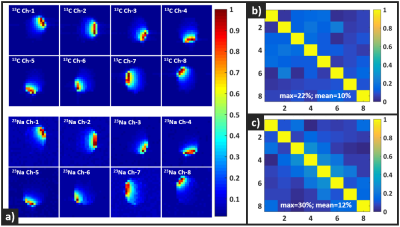 |
Flexible 8-Channel Array for Hyperpolarized 13C at 3T (32.1 MHz), with Nearly Identical 23Na (33.8 MHz) Sensitivity Profiles
Juan Diego Sánchez Heredia1, Wenjun Wang1,2, James T. Grist3,4,5, Esben Søvsø Szocska Hansen6, Christoffer Laustsen6, Vitaliy Zhurbenko2, and Jan Henrik Ardenkjær-Larsen1
1Department of Health Technology, Technical University of Denmark (DTU), Kgs. Lyngby, Denmark, 2Department of Electrical Engineering, Technical University of Denmark (DTU), Kgs. Lyngby, Denmark, 3Department of Physiology, Anatomy and Genetics, University of Oxford, Oxford, United Kingdom, 4Oxford Centre for Magnetic Resonance, University of Oxford, Oxford, United Kingdom, 5Department of Radiology, The Churchill Hospital, Oxford University Hospitals NHS Trust, Oxford, United Kingdom, 6The MR Research Center, Department of Clinical Medicine, Aarhus University, Aarhus, Denmark
We describe the design of a flexible coil array tuned optimally for 13C MRI at 3T (32.1 MHz), but with the coil coupling coefficients matched to be nearly identical at the 13C and 23Na (33.8 MHz) frequencies. In this way, the array provides the means to obtain accurate sensitivity profiles for hyperpolarized 13C imaging from the high 23Na naturally present in biological tissue. We show the feasibility of this approach, and compare the performance to other 13C coils, showing that the 13C SNR provided by this array is not compromised despite the modification to equalize the 13C and 23Na profiles.
|
|||
2510. |
Increased B1+ efficiency of a dipole antenna compared to a loop coil for 31P-MRS at 7T: simulations and cardiac MRSI data
Jabrane Karkouri1, Saba Shirvani1, Tiger Zhang1, Dennis Klomp2, Martijn Lunenburg3, Ladislav Valkovic4, and Christopher T. Rodgers1
1Wolfson Brain Imaging Center, University of Cambridge, Cambridge, United Kingdom, 2Department of Radiology, University Medical Center Utrecht, Utrecht, Netherlands, 3Tesla Dynamic Coils, Zaltbommel, Netherlands, 4Oxford Centre for Clinical Magnetic Resonance Research, University of Oxford, Oxford, United Kingdom
We evaluated the performance of two RF coil configurations for ultra-high field (7T) 31P-MRS applications in the body. We tested: (A) a dipole Tx/Rx + loop Rx coil vs (B) a quadrature dual-loop Tx/Rx coil. We assessed their relative performance by EM modelling simulations and through phantom and in vivo cardiac scans. Both simulations and experimental verifications indicate that there is notable improvement in terms of B1+ efficiency for the dipole+loop combination compared to quadrature loops. We extrapolate these preliminary findings to predict the performance of the dipole+loop combination if driven at 35kW total like our previous whole-body birdcage coil.
|
|||
2511.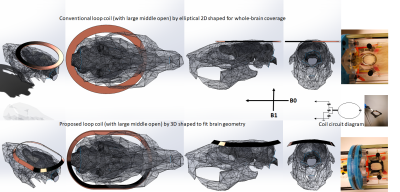 |
Optimized Single-loop Coil with 3D-shaped Design for Simultaneous fMRI and Optical Imaging in Rodent
Wen-Ju Pan1, Lei Zhou1, Gloria Perrin Clavijo1, Vahid Khalilzad Sharghi1, and Shella Keilholz1
1Biomedical Engineering, Emory University/Georgia Institute of Technology, Atlanta, GA, United States
Single loop coil was optimized in 3D shape to fitting rodent bran geometry and designed in slim and large center opening to meet the requirement of simultaneous fMRI and optical imaging. Relative to conventional 2D flat loop, the proposed 3D design may allow setting a loop coil closer to rat cerebral hemispheres and save more overhead space for optical imaging configuration than a 2D flat coil while keeping B1 perpendicular to B0. Our 3D-shape modification exhibited significant improvement in overall SNR and signal homogeneity especially in cortical areas and center brain in T2-weighted images, EPI and field maps.
|
|||
2512.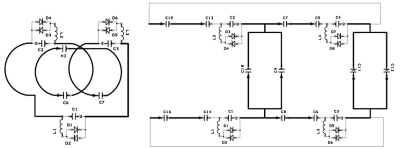 |
Inductively coupled small-diameter volume coils insertable to the knee coil at 7T for MR microscopy
Tomohisa Okada1, Shinya Handa2, Bill Ding2, Shin-ichi Urayama1, Koji Fujimoto1, Atsushi Shima3, Takashi Ayaki4, Nobukatsu Sawamoto3, Ryosuke Takahashi4, Hirotaka Onoe1, Tadashi Isa1, and Labros Petropoulos2
1Human Brain Research Center, Kyoto University, Kyoto, Japan, 2Quality Electrodynamics, Mayfield Village, OH, United States, 3Department of Human Health Sciences, Kyoto University, Kyoto, Japan, 4Department of Neurology, Kyoto University, Kyoto, Japan
MR imaging is frequently correlated to histopathology of specimen, and their high-resolution imaging is required. However, it is not usually feasible using the whole-body human MR scanner. We implemented inductively coupled small diameter coils insertable to the knee coil at 7T without modification of the coil interface. Up to isotropic 50 μm imaging was successfully conducted, and fine details of the specimen could be visualized using the same sequence for in vivo scans. The proposed coils are easy to use and will facilitate investigation of image-histopathology correlation.
|
|||
2513.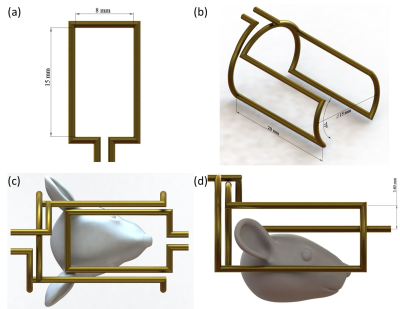 |
A Simple, Multi-purpose Coil for Improved Mouse Brain Image Quality and Coverage at 3-T MRI
Kuan-Hung Cho1, Po-Hsun He1, Hsuan-Han Chiang1, Ming-Jye Chen1, Ezequiel Farrher2, Nadim Jon Shah2,3, Chang-Hoon Choi2, and Li-Wei Kuo1,4
1Institute of Biomedical Engineering and Nanomedicine, National Health Research Institutes, Miaoli County, Taiwan, 2Institute of Neuroscience and Medicine – 4, Forschungszentrum Juelich, Juelich, Germany, 3Department of Neurology, Faculty of Medicine, RWTH Aachen University, Aachen, Germany, 4Institute of Medical Device and Imaging, National Taiwan University College of Medicine, Taipei, Taiwan
For mouse brain imaging, determining the size of a loop coil is a trade-off between SNR and imaging coverage. Here, we propose a multi-purpose coil arrangement incorporating a small loop coil and a position-adjustable add-on saddle coil to enhance the imaging coverage of anatomical images and improve the SNR in the regions distant to the surface coil. The result shows the imaging coverage can be adjustable for targeting different brain regions and demonstrated this design concept in mouse brain imaging experiments.
|
|||
2514.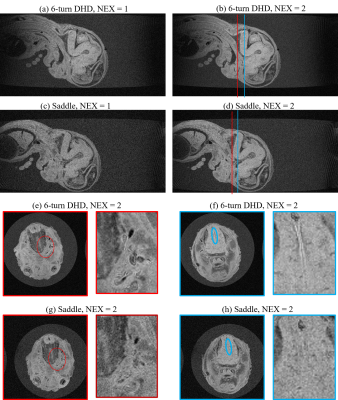 |
Development of a multi-turn double helix dipole coil for magnetic resonance microimaging of chemically-fixed human embryos at 7T.
Yuto Murakami1 and Yasuhiko Terada1
1University of Tsukuba, Tsukuba, Japan
A double helix dipole (DHD) coil, consisting of two tilted solenoid coils, exhibits the high signal-to-noise ratio (SNR) close to that of an equivalent solenoid whose SNR is almost three times larger than a saddle coil. However, its application to high-field MRI is challenging because of the high inductance. Here, we proposed a new DHD coil design with division capacitors that enables high-field MRI application. As proof-of-concept, we designed a 6-turn DHD coil for MR microimaging of a chemically-fixed human embryo specimen at 7T, and showed that the proposed DHD has nearly twice the SNR of an equivalent saddle coil.
|
|||
2515.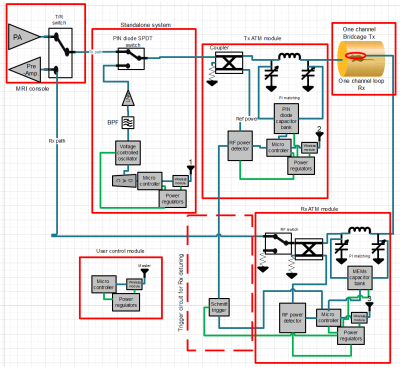 |
Wirelessly controlled stand-alone automatic RF tuning and matching system for preclinical imaging at 7T
Sri Kirthi Kandala1 and SungMin Sohn2
1Biomedical Engineering, Arizona State Universirty, Tempe, AZ, United States, 2Biomedical engineering, Arizona State University, Tempe, AZ, United States
Impedance matching of RF coils during MR imaging is crucial to improve SNR and would enhance power transfer efficiency for transmit coil reducing wastage of RF power. This work focuses on presenting a stand-alone system with wireless Automatic Tuning and Matching system (ATM) for transmit (Tx)-only and receive (Rx)-only coils separately. We present separate Tx-only and Rx-only coils with high power and low power ATMs respectively along with a self-triggering circuit for Rx coil decoupling while high power Tx signal is active.
|
|||
2516.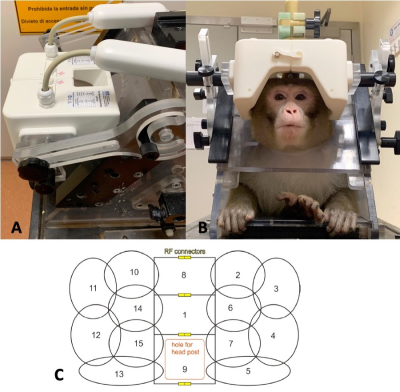 |
Imaging performance of a multi-channel non-human primate coil
Daniel Papp1, Urs Schüffelgen2, Mo Shahdloo2, Sebastian W Rieger1,3, Aaron T Hess4, Matthew Rushworth2, and Stuart Clare1
1Wellcome Centre for Integrative Neuroimaging, FMRIB, Nuffield Department of Clinical Neurosciences, University of Oxford, Oxford, United Kingdom, 2Wellcome Centre for Integrative Neuroimaging, Department of Experimental Psychology, University of Oxford, Oxford, United Kingdom, 3Wellcome Centre for Integrative Neuroimaging, OHBA, Department of Psychiatry, University of Oxford, Oxford, United Kingdom, 4British Heart Foundation Centre of Research Excellence, Department of Cardiovascular Medicine, University of Oxford, Oxford, United Kingdom
A 15-channel array coil has been developed for our centre by a coil manufacturer for the purposes of awake behaving macaque fMRI. Here, we evaluated the imaging performance in vivo and on phantoms. Compared to a 4 channel flexible coil, we found significant improvements in SNR and tSNR both in vivo and in phantom studies. Furthermore, we demonstrate the feasibility of multiband and in-plane accelerated acquisitions, up to a multiband factor of 6 with in-plane acceleration of 2.
|
The International Society for Magnetic Resonance in Medicine is accredited by the Accreditation Council for Continuing Medical Education to provide continuing medical education for physicians.